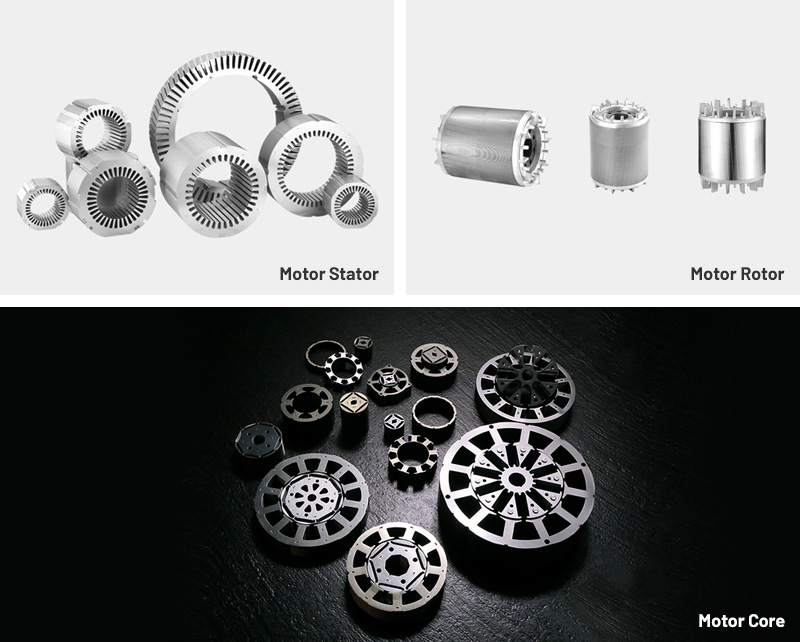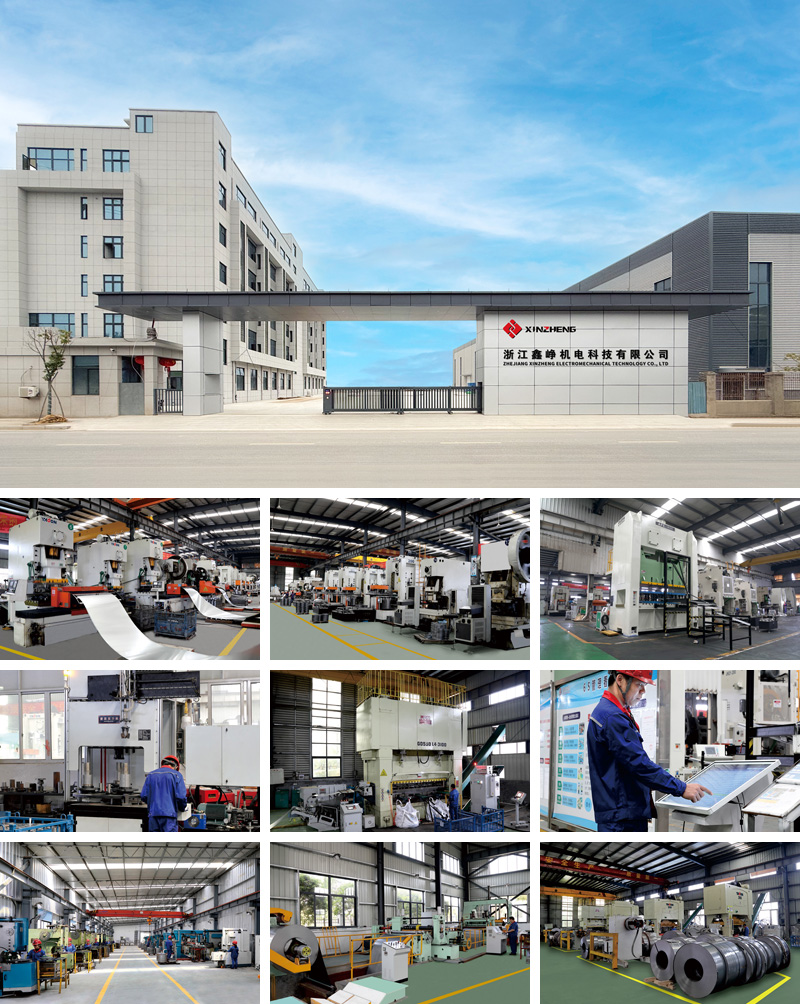The industrial landscape is increasingly focused on energy efficiency, sustainability, and operational cost reduction. Rising energy costs, global regulations, and environmental policies have accelerated the adoption of high-efficiency motors in manufacturing, HVAC, pumping, and automation sectors. According to recent studies, electric motors account for nearly 45% of industrial electricity consumption, underscoring the impact of efficiency improvements on operating expenses.
Motors designed to meet IE3 or equivalent efficiency standards are now standard in many industrial applications. Within these motors, the stator plays a critical role in defining electromagnetic performance and efficiency. High-quality YE3 series motor stator laminations have become a crucial component, providing reduced energy losses, improved thermal management, and enhanced mechanical stability, making them indispensable in modern energy-efficient motor designs.
Electric motor efficiency is heavily influenced by the behavior of the stator’s magnetic core. Two primary sources of energy loss occur in the core: eddy current losses and hysteresis losses. Eddy currents arise from circulating currents induced by alternating magnetic fields, generating heat and reducing efficiency. Hysteresis losses occur due to repeated magnetization and demagnetization of the steel core.
stator laminations mitigate these losses by dividing the core into thin, insulated sheets. Each sheet interrupts the path for eddy currents, reducing their magnitude, while the magnetic properties of the steel minimize hysteresis losses. For high-efficiency motors like those supported by the YE3 series, these laminations are essential to achieve optimal energy conversion, lower operating temperatures, and extended service life.
YE3 series stator laminations are typically manufactured from non-oriented electrical steel with 2–3% silicon content. This material offers high magnetic permeability, low hysteresis loss, and appropriate electrical resistivity to minimize eddy currents. Each lamination is coated with a thin insulating layer to prevent interlaminar conduction, which is essential for maintaining efficiency under alternating current conditions.
Laminations are precision-stamped or laser-cut into rings that match the stator core geometry, including slots for windings and the inner bore for rotor clearance. For high-efficiency applications, lamination thickness usually ranges between 0.35 mm and 0.50 mm. This thickness balances the reduction of eddy currents with mechanical stability and manufacturability.
Coil Preparation: Electrical steel coils are unrolled, inspected, and cleaned.
Stamping or Laser Cutting: Precision cutting ensures accurate slot dimensions, bore concentricity, and minimal burr formation.
Insulation Coating: Each lamination receives a uniform insulating coating to electrically isolate layers.
Stacking and Core Formation: Laminations are stacked, aligned, and compressed to form a stable stator core with minimal air gaps.
Final Assembly: Windings are inserted, and varnish or epoxy impregnation is applied to ensure structural integrity and thermal stability.
This process ensures that YE3 series laminations provide consistent magnetic performance, reliable thermal behavior, and long-term mechanical durability.
Several variables determine the effectiveness of YE3 stator laminations:
Steel Grade and Magnetic Properties: Higher-grade silicon steel reduces core losses and improves magnetic performance. Grain-oriented structures further enhance efficiency.
Lamination Thickness and Insulation Quality: Optimal thickness minimizes eddy currents while ensuring structural rigidity. Uniform insulation prevents interlaminar conduction.
Dimensional Precision: Accurate stamping and tight tolerances reduce flux distortion, vibration, and uneven heating.
Stacking and Assembly: Proper alignment and bonding eliminate gaps, maintain magnetic uniformity, and enhance mechanical strength.
Thermal Management: Reduced core losses, coupled with efficient heat dissipation, maintain insulation integrity and prolong motor life.
Process Consistency: Batch-to-batch uniformity ensures predictable motor performance and avoids variations in efficiency or noise.
Selecting a reliable supplier for YE3 series stator laminations is critical for motor manufacturers:
Material Certification: Documentation for electrical steel grade, thickness, and loss curves.
Manufacturing Capability: Precision cutting, stacking expertise, and capacity for high-volume orders.
Quality Assurance: Non-destructive testing, magnetic loss measurement, and batch traceability.
Compliance: Adherence to international efficiency standards and environmental regulations.
Delivery Reliability: Timely shipments and stable supply chains for continuous production.
A well-qualified supplier ensures that lamination quality supports the motor’s energy efficiency targets and overall reliability.
Even with high-quality laminations, several challenges persist in motor production:
Excessive Core Losses: Poor material or improper lamination thickness increases energy losses.
Overheating: Inadequate thermal design or insulation failure can shorten motor lifespan.
Noise and Vibration: Misaligned laminations or dimensional inaccuracies can generate mechanical noise.
Batch Variability: Inconsistent lamination quality affects motor efficiency and reliability.
Cost Constraints: Balancing material quality and manufacturing cost remains a critical challenge for OEMs.
Addressing these issues requires rigorous quality control, supplier oversight, and proper design consideration.
YE3 series stator laminations are widely used in:
Industrial Pumps and Compressors: Continuous operation in chemical plants, water treatment, and HVAC systems.
Ventilation and HVAC Systems: Commercial buildings and data centers demand low-noise, efficient operation.
Conveyors and Material Handling: Long-running machinery in manufacturing and logistics.
Renewable Energy Systems: Motors in energy-optimized applications benefit from reduced energy loss.
Retrofits: Upgrading older motors to comply with current energy-efficiency standards.
In each scenario, the lamination quality directly influences energy consumption, motor reliability, and operational cost savings.
The drive toward IE4/IE5 efficiency standards has led to the development of electrical steel with optimized grain structure, higher resistivity, and thinner gauges, further reducing core losses.
Adhesive bonding and hot curing reduce interlaminar gaps, improve thermal conductivity, and enhance structural rigidity compared to traditional stacking methods.
Motors increasingly operate with inverters. Lamination design is evolving to accommodate variable flux densities and thermal cycles, requiring precision engineering and adaptable manufacturing processes.
Industrial buyers demand traceable materials, compliance certifications, and consistent performance data. Suppliers providing transparent documentation gain a competitive advantage.
Automated stamping, lamination stacking, and non-destructive testing improve precision and consistency, supporting high-volume production while maintaining quality standards.
Q: Why are laminations necessary in a stator core?
A: Laminations reduce eddy currents and hysteresis losses, minimizing heat generation and improving efficiency. Insulated sheets interrupt circulating currents that would occur in a solid core.
Q: How does lamination thickness impact efficiency?
A: Thinner laminations reduce eddy currents but must maintain mechanical stability. Optimizing thickness balances efficiency gains with manufacturability and durability.
Q: What role does thermal management play?
A: Even with reduced core losses, motors generate heat. Efficient heat dissipation protects insulation, ensures consistent performance, and prolongs motor life.
YE3 series high-efficiency motor stator laminations are integral to modern energy-efficient motors. By combining premium electrical steel, precise lamination thickness, advanced insulation, and meticulous stacking, these components reduce core losses, improve thermal performance, and enhance motor reliability. For industrial motor manufacturers, careful supplier selection, quality control, and process consistency are essential to ensure that the laminated stator supports high-efficiency operation over the motor’s lifecycle. As energy-efficiency standards rise, YE3 series stator laminations will continue to play a pivotal role in industrial sustainability, operational cost reduction, and long-term performance.
Product Category

Comprehensive Strength


Copyright © Zhejiang Xinzheng Electromechanical Technology Co., Ltd. All Rights Reserved.
This website uses cookies to ensure you get the best experience on our website.